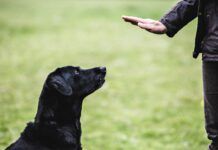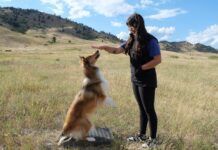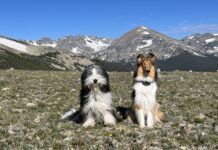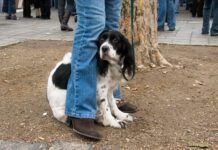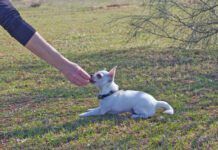Home Search
dog obedience training - search results
If you're not happy with the results, please do another search
How to House Train a Puppy
Young puppies have very small bladders and are still developing muscle tone. Because of this, when they need to go, they go! Read your puppy’s body language and be proactive to prevent accidents from happening.
How To Train an Aggressive Dog
An aggressive dog can be dangerous and a liability in the event she hurts a person or another animal. The good news is that aggressive behavior can be successfully modified using a combination of good management and humane behavior modification.
How To Train a Deaf Dog
Training a deaf dog requires patience and consistency, just as training a dog who can hear does. While replacing the verbal “sit” with a...
Whole Dog Journal’s Gear of the Year 2025
Here at WDJ, we’re always on the lookout for products that improve life with our dogs in any way. Every year, we talk with our experts and determine the toys, training and care tools, and treats that provide the biggest lift to them and their canine companions. These are their top picks for 2024!
The Importance of Mental Stimulation for Dogs
Dog or human, nobody likes being bored. While some boredom is inevitable—this is, after all, real life we’re talking about—proper mental stimulation for dogs...
How To Bond With Your Dog
Building a relationship with your dog takes time and effort. Although it’s plenty of fun to bond with a new dog, your four-legged friend might not adore you instantly.
How Much Does It Cost to Own a Dog?
Few things are as rewarding as bringing a dog into your family. Dogs bring inherent expenses though and it's important to understand the financial commitments so you can budget for the known costs.
What Traits Make the Best Family Dogs?
Committing to a dog should never be taken lightly; before you do, ask yourself some critical questions about your lifestyle. Though there are no guarantees, dogs with certain traits may show promise to be good family dogs with the proper training and care.
How to Teach a Dog to Sit
Sit is one of the first things many people teach their dogs, and it’s a helpful trick. It’s the foundational skill for a sit-stay...
How to Build Confidence in a Fearful Dog
Tips for helping your insecure, fearful, or so-called “submissive” dog gain confidence to improve the quality of her life.
How To Potty Train a Puppy in an Apartment
Potty training a puppy is an exercise in diligence, consistency, and patience. . So how do these things apply when it comes to how to potty train a puppy in an apartment?
How to Teach a Dog to Lie Down
Are you having a difficult time teaching your dog to lie down? With some dogs, it’s more difficult than others, but it’s not impossible. The reason is likely that you are not properly communicating what you want. In some cases, however, timid dogs are less comfortable lying down. It’s up to you, as the trainer, to determine where your difficulties lie.




